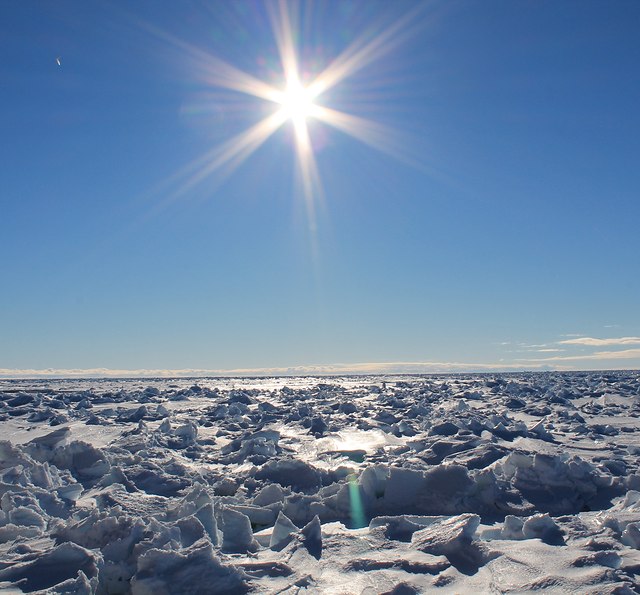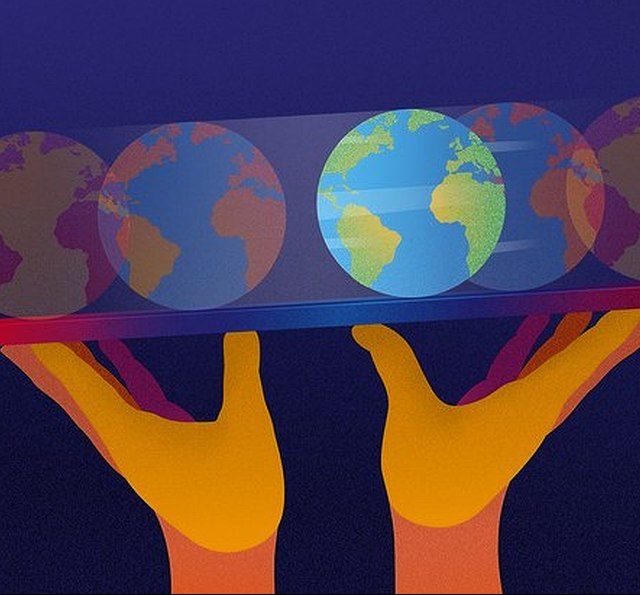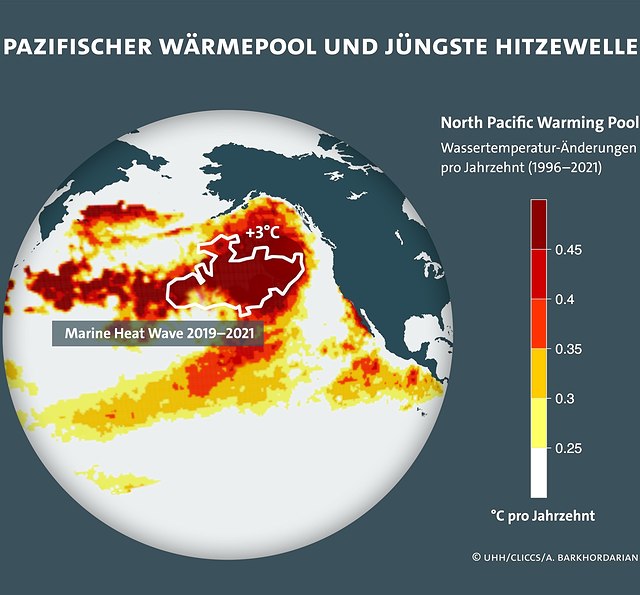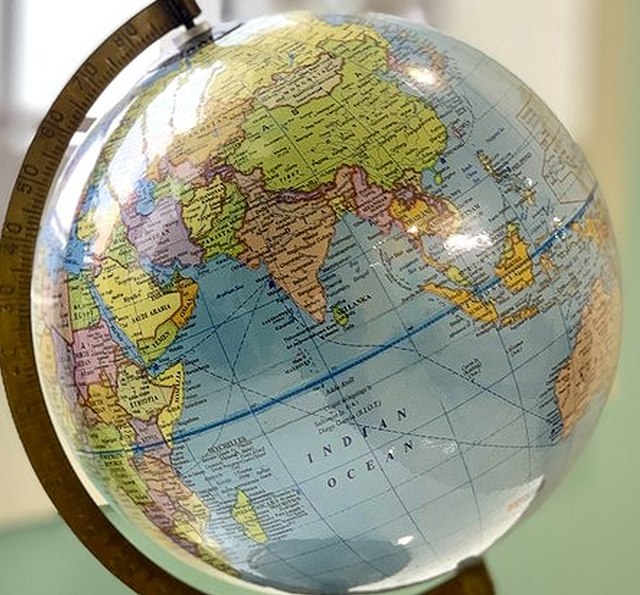Climate change: Questions and Answers
Which factors are responsible for climate change and which effects on our environment and society are already noticeable? What are potential solutions and which of them are plausible? These and other questions about climate change are answered here according to the latest climate science.
Common questions about climate change
1. What is the standard definition of climate change?
The term “climate change” refers to measurable changes in climate factors in an extensive region and over an extended timeframe. Climate factors include wind, precipitation and temperature, that is, the cooling or warming of the Earth’s climate. These temperature changes spark further changes in the climate. This should not be confused with weather, which is characterized by short-term changes.
Climate changes have been recorded and analyzed for centuries. Drawing on this observational data, and on models and data that capture the climatic history prior to the beginning of observation, today’s researchers seek to use complex computational models to predict possible climate futures.
The greatest climate change in the past few centuries is global warming, caused by human beings and our constantly rising levels of greenhouse gas emissions. The rising mean global temperature affects our entire climate system. Greenhouse gases have been a subject of research since the 1850s, and as far back as the early 20th century, researchers warned of their connection to global warming and the potential consequences. Over the past few decades, the first impacts have become apparent. For example, droughts and heavy rains have become more frequent, while the sea level is rising, with devastating effects on human beings and the environment on a regional scale.
2. What are the causes of climate change?
The Earth’s climate is based on a delicate balance of various factors. For millions of years, this balance is what has made life on Earth possible.
- One especially important component is the greenhouse effect – without it, the Earth would be too cold for life to exist. Incoming solar radiation is reflected or absorbed by the Earth’s surface. In turn, the warmed planet emits radiation into the atmosphere. The atmosphere contains greenhouse gases which, like a barrier, prevent this radiation from escaping into space. Instead, the barrier absorbs it. When this happens, the greenhouse gases emit heat in all directions, including back to the Earth, causing its surface to warm further. This process is referred to as the “natural greenhouse effect”.
- There are also other natural factors that contribute to climate change, such as plate tectonics, solar and volcanic activity, and the precise composition of atmospheric gases.
Over the past few centuries and adding to these natural phenomena, human activities have increasingly a negative impact on the climate. Here, the main focus is on the greenhouse effect.
- Due to industrialization and the combustion of fossil fuels like natural gas, coal and petroleum, there are more and more emissions, which amplify the natural greenhouse effect.
- Because of the rising concentrations of greenhouse gases, especially carbon dioxide (CO2), more radiation is reflected back toward the Earth, causing temperatures to rise further.
- Apart from industry, emissions are particularly produced in the transport and energy sectors, by clearing wooded areas, by industrial agricultural (e.g., industrial livestock farming), and by both general land use and construction.
- Reducing these anthropogenic – that is, caused by humans – sources is the most important way to limit climate change and its effects.
3. What are the effects of climate change?
Many people chiefly associate climate change with rising temperatures at the Earth’s surface, that is, on the land and ocean. But nature is an interconnected system, in which and even small changes can produce substantial effects.
- Industrialization brought with it a massive increase in greenhouse gases. As a result, the surface temperature on the Earth rose by 1.1 degrees Celsius between 1880 and 2020, and the ocean not only grew warmer, but more acidic.
- Warmer air means that more water evaporates. In addition, warmer air can hold more moisture. As a result, extreme weather events like heavy rains and droughts are becoming more frequent. The glaciers are melting, the sea level is rising. The Arctic sea ice is steadily declining.
- Depending on the region, the increased heat can lead to reduced precipitation, wildfires, and prolonged droughts. These phenomena can threaten or destroy entire harvests, and with them, the livelihoods of millions of people. Plants and animals have to adapt to changed temperatures and precipitation or die out, ecosystems are destabilized. The rising sea level endangers coastlines and small islands, directly putting people’s homes and entire ecosystems at risk. This sparks, for example, forced migration.
In order to combat these effects, human beings must massively reduce their greenhouse gas emissions. Moreover, transformative adaptations measures focused on addressing the socio-ecological causes of vulnerability to climate impacts are absolutely essential.
4. Can the goals of the Paris climate agreement still be achieved?
The main goal of the Paris climate Agreement is to keep global warming below two degrees Celsius, and ideally to limit it to 1.5 degrees over the preindustrial level. This refers to the mean global temperature; at the local level, the warming can easily be much more or less. Even at a mean rise of more than 1.5 degrees Celsius, we could see devastating effects in many regions.
- In order to attain the 1.5-degree target, the maximum amount of remaining CO2 that could be released into the atmosphere was calculated. Based on this, global emissions need to be reduced to zero by 2050. In addition, we must develop and refine technologies that can remove future emissions from the atmosphere and safely store them.
- Given the various measures required and their sluggish implementation, researchers now find it unlikely that the targets set in the Paris climate agreement can be met. For example, studies conducted at Universität Hamburg in 2021 and 2023 have shown that deep decarbonization by 2050 and thus staying within the 1.5-degree limit aren’t plausible scenarios.
More than ever, political decision-makers are called upon to define and implement ambitious climate policies. Fossil fuels like petroleum and coal have to be replaced by wind and solar energy. Agriculture, transport and industry need to find ways to do business without producing greenhouse gases. The transformation must be rapid and comprehensive; every degree of warming that can be avoided means avoiding far-reaching negative impacts on society and the planet.
5. How does climate change affect society?
It can be observed planet-wide: As climate change progresses, extreme weather events are becoming more frequent and are particularly dangerous for vulnerable groups. This especially includes Indigenous peoples, low-income population groups, the ill and the elderly, and children. Yet there are also clear differences throughout the globe: Different regions are exposed to different climate impacts.
- For example, while countries in the Global North are also affected by cyclones, flooding and droughts, the Global South is more susceptible to these threats. These climate impacts directly affect harvests and livelihoods, which can lead to famines and wars in these countries.
- Given the greater vulnerability of the Global South, the effects of global warming are especially being felt by those countries that historically have emitted little CO2 and have therefore contributed the least to the problem.
- The rising sea level will render some islands and coastlines uninhabitable. Livelihoods will be lost, forcing many people to leave their homes.
- Meanwhile, in industrialized countries, wildfires, heat waves, droughts and flooding will become more frequent – with massive repercussions for ecosystems, biodiversity, the economy and health.
Climate change also affects societies’ general attitudes. In the past few years, besides major movements like "Fridays for Future" – which, through a range of protests and campaigns, call for more efficient and consistent climate protection policies – many people have made explicit demands for climate protection – especially towards policymakers. Decision-makers’ lack of effectiveness causes some people to lose faith in the government and in its willingness to actually implement the required climate targets. Given the less than rosy prospects, some people are in fact suffering from climate angst.
6. What are possible solutions to stop climate change?
The greatest climate change drivers are greenhouse gases like carbon dioxide (CO2), methane and ozone. Accordingly, limiting emissions of these gases is the most important and effective way to mitigate climate change. Doing so will require comprehensive and worldwide decarbonization – that is, saying goodbye to fossil fuels, which are responsible for two thirds of all emissions since 1850, and switching to renewables like solar and wind energy.
- Transport and transportation are major CO2 producers. Reducing air travel to a minimum; expanding public transportation options like rail, buses and trams; fewer cars; and phasing out internal combustion engines are concrete means of reducing emissions.
- At the same time, research continues into technological solutions for removing CO2 from the air and safely storing it. One approach involves filtering systems that draw the carbon dioxide from the air. The CO2 removed is then stored underground. Another method uses rock dust, which is scattered on certain soils. When it comes into contact with rain, a chemical reaction transforms it into carbonates. In this way, it fixes atmospheric CO2 and ultimately transports it to the ocean, where it is stored.
Approaches like these will be important in terms of reaching our climate targets. However, most of them are still being developed and are hardly ready for wide-scale use. Further, none of them is sufficiently mature to be the solution on its own.
- A transformation of economy is indispensable. All aspects of manufacturing must change, away from fossil fuels and toward renewables. On a planet with finite – and therefore limited – resources, all members of the economic system must act sustainably and as resource-efficiently as possible.
Whether or not deep decarbonization by 2050 is plausible also depends on public protests, organized campaigns, and litigation regarding climate change. These factors put increasing pressure on governments around the world to adopt policies that support the requisite change – and not just by announcing climate targets, but also by consistently and actively pursuing them. Achieving climate neutrality can only be reached through social transformation, which in turn requires political momentum and structural conditions for climate action.





